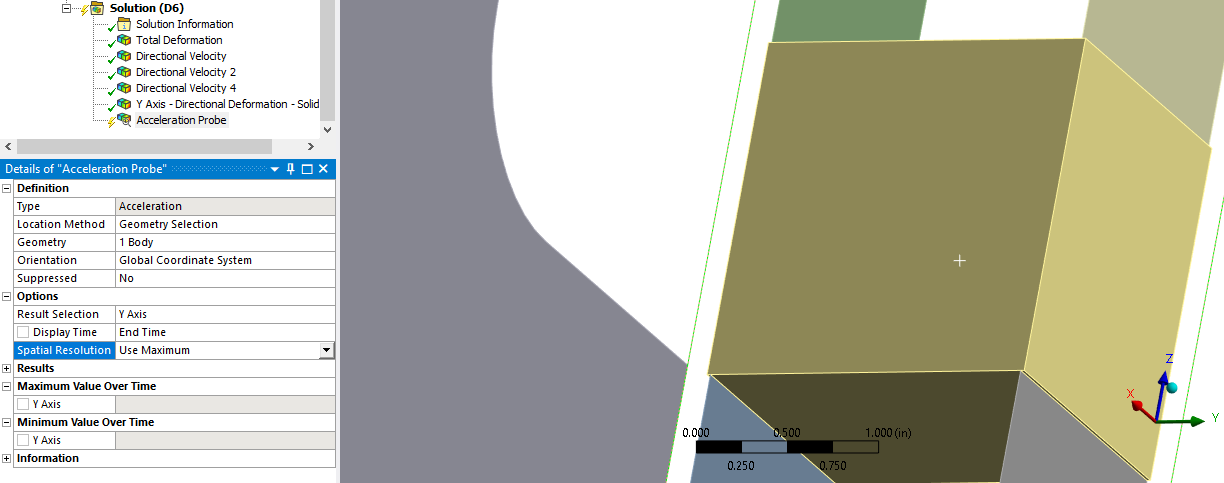-
-
February 5, 2024 at 8:36 am
-
February 5, 2024 at 9:39 pm
peteroznewman
SubscriberWhat is the scope of the blue acceleration data? I can tell that what is being scoped is not a single node or vertex because different values are shown for the minimum, maximum and average values. When the scope is a single node or vertex, all three show the same value. You can request acceleration for a vertex, an edge, a face or a body. What have you chosen? Please show the Details window.
What is the scope for the red acceleration probe (Y) data? Probes have limited scopes such Joints and other objects, you can't pick the same scope that you did for an acceleration result. Please show the Details window.
Acceleration results are relative to ground so would be an absolute acceleration. A joint can be defined between two moving points so the Probe of the acceleration of that joint will be a relative acceleration.
How do we know these are restricted to the same direction? One says Y but the other doesn't. What coordinate frame is Y in?
-
February 6, 2024 at 8:21 am
murali
SubscriberHello Peter,
As you have correctly pointed out, the scope in both cased is a body, rigid body in this case. What i need is the acceleration of the body as a whole, hence i have chosen it as the scope.
For the blue plot i have chosen orientation in Y axis. Attaching the screenshots below.
If the probe shows only the relative acceleration, how can i get the directional acceleration of the rigid body as a whole?
The rigid body (the central mass in this case) has relative motion with the frame attached to it.
-
-
February 6, 2024 at 12:15 pm
peteroznewman
SubscriberI didn't say the probe shows only relative acceleration, I said it can show relative acceleration if a joint is created between two moving objects. It can also show absolute acceleration if a joint is to ground for example. Since you provided no context in your original post, I wanted to cover that possibility.
I expect that the probe provides the acceleration of the center of mass of the rigid body, while the directional acceleration provides the acceleration of the corners of the rigid body.
In my model, I used a Flexible body for the mass, not a rigid body. When I request a probe, I get a Spatial Resolution field where I can choose either Use Maximum or Use Minimum.
-
February 6, 2024 at 1:52 pm
murali
SubscriberOk. Thank you Peter.
-
-
- The topic ‘Difference between acceleration probe and directional acceleration’ is closed to new replies.


- LPBF Simulation of dissimilar materials in ANSYS mechanical (Thermal Transient)
- Convergence error in modal analysis
- APDL, memory, solid
- Meaning of the error
- How to model a bimodular material in Mechanical
- Simulate a fan on the end of shaft
- Nonlinear load cases combinations
- Real Life Example of a non-symmetric eigenvalue problem
- How can the results of Pressures and Motions for all elements be obtained?
- Contact stiffness too big

-
4212
-
1493
-
1375
-
1197
-
1021

© 2025 Copyright ANSYS, Inc. All rights reserved.








